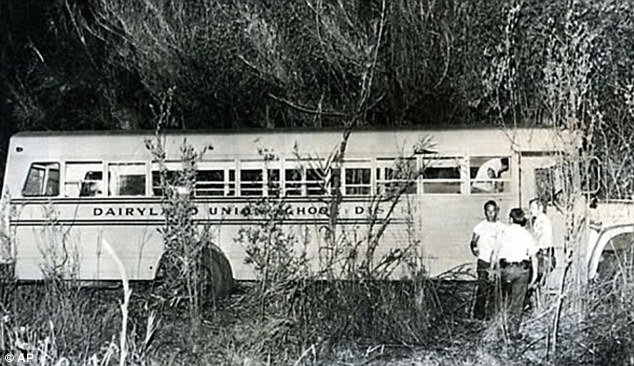|
Getting your Trinity Audio player ready...
|
Lately, I’ve been intrigued by stories about historical events which happened in my life time. Not only are they fascinating to hear about, but they are a healthy throwback to the 1980’s or 1990’s when I was growing up. Seeing footage or photos shot during that time sparks memories of where I was in life when those events were taking place.
I had some free time this afternoon, so I checked out the CNN documentary on MAX telling the story of the Chowchilla Kidnapping of twenty six school children while they were heading back home from a summer class trip in 1976. Up until today, I had never heard about a town in Chowchilla in California, or a single bit about the kidnapping, even though apparently there have been a couple of TV movies made and it was covered by “48 Hours.”
The documentary pulls you in with news reports and quotes by the kidnapping survivors, and uses a balanced blend of TV news footage and stage recreation to tell the story. You get to hear from different sides, including the students, news reporters, law enforcement, parents, and psychologists. The idea of the bus driver and school children being kidnapped at gun point is harrowing enough, but then there is the trauma of being forced to climb down into a hole in the ground and, later, a desperate escape back out to the surface. The kids all were sure that they were done for, and it was sheer will and ingenuity that allowed them to escape back out.
What was even more aggravating was the reason for the kidnapping. Fred Woods, the originator of the plan, said he wanted to ransom the kids for money from the state so that he would have his “own money” instead of relying on his father’s fortune. He and his accomplices, James and Richard Schoenfeld, hoped to use the money to film a movie inspired by the popular crime and action dramas they had seen in the theaters. Their plan fell apart when they were unable to call in the ransom due to the phone lines being jammed by so many calls being made by worried parents, law enforcement agencies, and reporters. The three guys ended up falling asleep, and by the time they woke up their captives had freed themselves. So, their bad plan had fallen apart (fortunately) due to these major flaws.
As I learned about the story, I couldn’t help putting myself in the shoes of some of the key players and asking what I would have done if this had happened to me. The school bus felt guilty later about putting the kids in harm’s way, but he really was in a no-win situation since the guys had guns. It is also hard to know how I would have reacted as a kid if I had been kidnapped and then directed to climb down into that hole, or if I would be among the ones helping or cowering in the corner and waiting to die. I also felt for the parents, as they began to wonder why the bus had never arrived. And, I really felt for the kidnapping survivors as they reunited years later as adults, still dealing with the trauma of going through that ordeal.
And, it’s hard to imagine that childhood trauma was still new territory back in the late 1970’s. One of the kidnapping survivors related the story that experts had advised their parents not to comfort him after he had had a nightmare so that they weren’t reinforcing the behavior. Instead, if they ignored their cries for help, they would stop having nightmares, something that struck me as bologna.
Another thing that struck me was that the public’s reaction to the kidnapping, especially in the beginning, was very much the same as how we react to things today. There were a lot of conspiracies and theories as to what happened to the kids from the school bus, but they could only be directed at the experts, and those experts dispelled them quickly. If something like that were to happen today, I feel that the majority of the conversation would take place on social media, leading to the fracturing of the investigation as people gravitated towards the conspiracies they believed in the most. Examples of some of the conspiracies included UFO’s, satan worshippers, and the Zodiac Killer. Of course, back in 1976 the public was a great deal more shocked that something like this could happen. Nowadays, we are more mistrustful of the world.
One strange benefit that came out of this crime is that it led to a deeper understanding of the nature of childhood trauma. Although I have never gone through an ordeal as heinous as these kids did, I can’t help but wonder if I somehow benefitted from everything that was learned from those survivors. The documentary did point out that it is due to the ChowChilla kidnapping that more effort was made to counsel students after the attack at Columbine, and following other school shootings. So, society was impacted in many ways by this incident.
Ultimately, the story of the ChowChilla Kidnapping and its aftermath is a lesson in human nature. It’s healthy for us to ask what makes people do evil things like kidnap a bus load of kids, and how do people, especially kids, find the strength to escape a tough situation? By understanding that event, we gain some better understanding of ourselves, where society is going, and where it might go next. But, then, there is much we can learn about our history.
“ChowChilla” is available on MAX streaming right now, under series.







